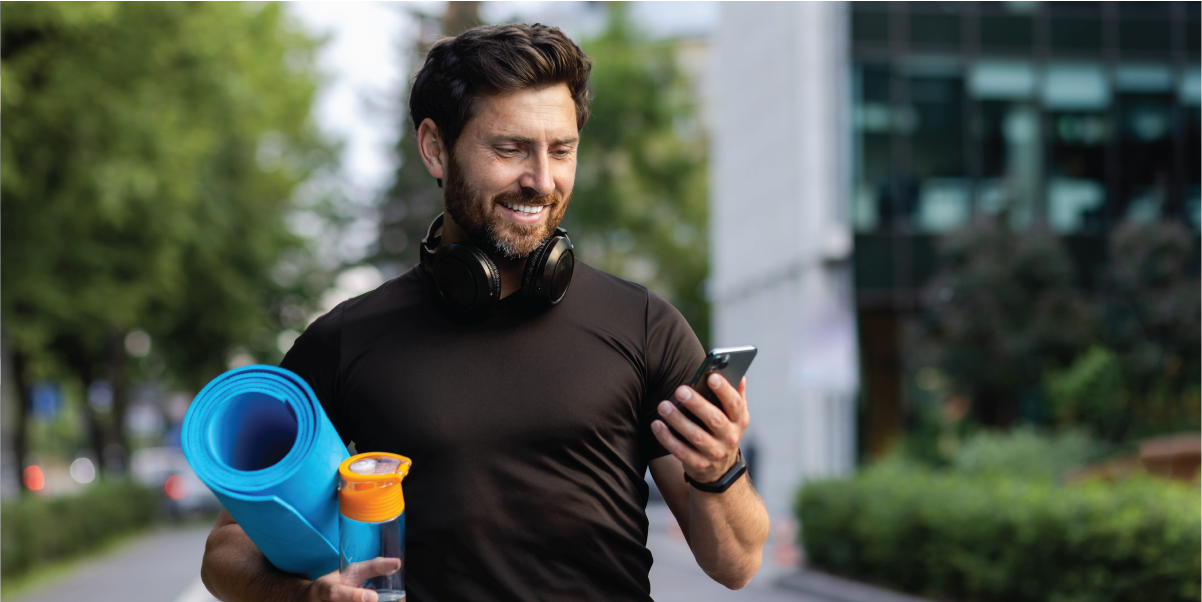How many times have you downloaded a new health and fitness app, only to let it collect cobwebs in your phone? Or maybe you used it for a little while before deleting it because it just didn’t work for you.
Fernando Orfila, a computer science major at Kennesaw State University, is working on a solution to that problem: an app designed to hold your attention and keep you focused on your health and wellness goals by integrating game mechanics—the same methods that video game designers use to keep players coming back for more.
To get started, Orfila conducted interviews with specialists in behavioral psychology and exercise science to uncover the mental and physical barriers to long-term physical activity. Orfila then turned to interviewing potential users, exploring their motivations and interests related to fitness apps and training. With that compiled insight, he created an anonymous survey, gathering responses from 25 men and 25 women, which yielded a 50% response rate.
“In the US, people stop using wellness apps within 30 days of downloading the app,” Orfila said. “The same pattern happens with gym memberships: 63% of members stop going to the gym after three months, and 95% of them stop after one year.”

Staying motivated is one problem, but the consequences of giving up can be even more serious. When we stop prioritizing health, the impact on our well-being is significant. Physical inactivity, obesity, and Type 2 diabetes are widespread problems in the U.S., and they come with a staggering cost. Combined, these issues account for more than $700 billion annually in healthcare expenses and lost productivity.
While it’s easy to see how physical inactivity directly affects health, what’s less obvious is the cost of failed fitness habits. When apps and gym memberships go unused, we not only lose personal progress, but we also fail to address the root causes of inactivity, which contribute to these larger health crises.
By studying how fitness apps lose user engagement, Orfila’s research is part of a broader effort to reduce physical inactivity—and, in turn, help alleviate its economic and health impacts.
Video game developers have already pinpointed ways to keep players engaged daily for extended periods of time, with players even buying new versions of the same game as it is released. So, the question Orfila is asking is: Are there any techniques being used in game development that can also be utilized to help people get active and healthier?
Orfila conducts research under Assistant Professor of Game Development Lei Zhang as part of the Summer Undergraduate Research Program (SURP), which is sponsored by the Office of Undergraduate Research. They believe that health and wellness apps could be a solution not just for casual scrollers but for anyone seeking to improve their physical activity.
At the center of Orfila’s work is a technique called Emotion-based Dynamic Difficulty Adjustment (DDA)—a game mechanic that intelligently adapts the difficulty level to match the user’s capabilities and emotional state.
“The idea is to keep the training experience in that ‘Goldilocks zone,’” Orfila explained. “Not too easy that users get bored and quit, and not too hard that they feel frustrated and give up.”
To achieve this, Orfila’s app asks users specific questions after each workout set to gauge how they’re feeling. “We collect information like perceived effort, repetitions completed, and weight lifted, then combine that data with emotional feedback from the user,” Orfila said. “The app’s algorithm uses all of that to adjust the difficulty for the next session. It’s like having an intelligent personal trainer that understands your limits and challenges you appropriately.”
Orfila’s work is part of a growing field of research exploring how game design principles can make a real impact on public health. By applying techniques that keep gamers engaged, he hopes to help more people stick with their fitness journeys.
“I am one of the millions of people who have downloaded an app and within 30 days stop using it; or signed up for a gym membership and then quit,” he said. “I’m not a personal trainer or a gym expert trying to tell everyone else what to do. I’m just looking for a way to get people like me more active and engaged with physical activity.”
Take a look at some of the other research turning heads at KSU